Miniature unmanned quadcopter QR Ladybird “insect”
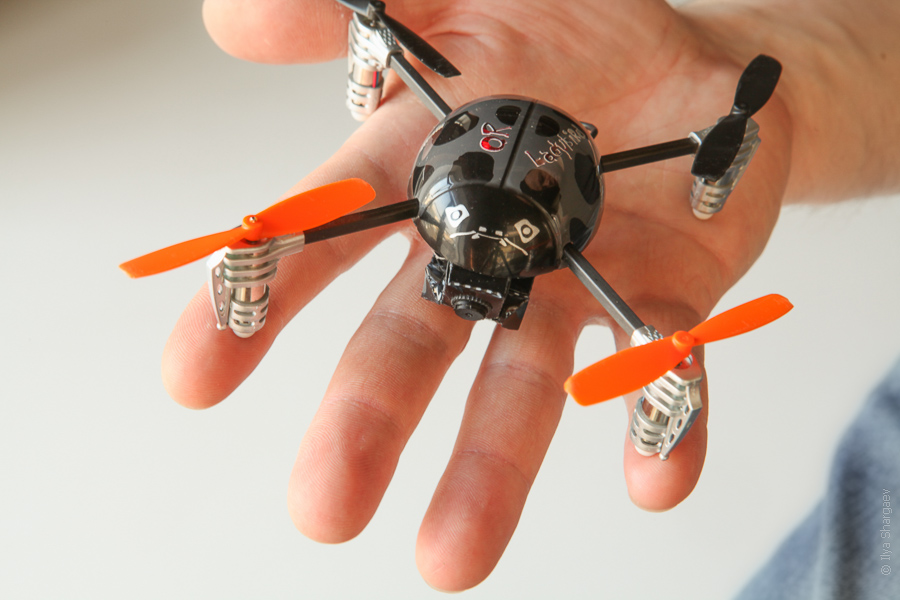
QR Ladybird from Walkera is a small quadrocopter sold in a plug and fly package, starting at $ 90, including shipping. There is a complete set with FPV - a camera and a video transmitter are suspended from the copter, a receiver and a screen are built into the remote control - you can practice flying in the “first-person view”.
Lyrical digression
In me (as, perhaps, in any boy), since childhood, there has been an interest in various radio-controlled models. A sharpening of interest came when I saw photographs taken from an incredible angle of the Church of the Intercession on the Nerl in the spring flood - Stanislav Sedov and Dmitry Moiseenko shot from the air, from a radio-controlled model of a helicopter:
 (photo taken from Stanislav Sedov ’s blog )
(photo taken from Stanislav Sedov ’s blog )I went a little deeper into this topic, became interested in multicopter. However, in the process of studying, it became clear that the multicopter is such a thing that needs to be built - to immerse yourself in modeling, try, make mistakes, try again. Here, for example, one of articles on this subject on Habré . Respect for Yavanosta’s dedicationthe appearance of the drone he had assembled from improvised materials somewhat cooled my fervor, I postponed this topic as complicated. But recently, I came across a new article about unmanned aerial photography written by veell . It became clear that there are ready-made, well-thought-out construction kits from serious manufacturers for sale, and you can assemble a large multirotor that can lift the camera on board and take a breathtaking photo or video from the air ...
But I have very little experience in controlling unmanned radio-controlled models. A couple of years ago, cheap small Chinese co-alignment helicopters began to appear everywhere. I took from friends and bombed two pieces. They have flimsy parts, and where to get spare parts is not clear, I only needed one helicopter for a day or two flights and a dozen falls.
And now, before deciding whether to get involved in the selection and purchase of a large multicopter, I wanted to get a little familiar with the topic, try it out, start with something not too complicated, not very expensive, small (so that you could fly at least in the room), to the best of reliability and with available spare parts. And it is desirable that this was a complete set, ready for flight.
Here on the rcdesidn.ru forum I came across a topic, according to Ladybird, and it immediately became clear to me that a bug is exactly what I am looking for.

(this and other photos later in the post are mine)
Basic insect data and answers to questions.
Walkera is a Chinese manufacturer, but the quality is quite tolerable and it specializes specifically in radio-controlled models of aircraft, they have extensive experience and a wide range of different models, equipment and spare parts.
Price. For a kit with the cheapest remote control Devo 4 (the quality of this remote is approximately the same as for cheap helicopters) about $ 90 with delivery. With a semi-professional remote control (e.g. WK-2402 go Devo 7) about $ 170. Spare parts, additional batteries can be ordered with the copter. Spare parts are sold absolutely everything, you can at least collect a whole bug from them (only this does not make sense - at a price it will come out two times more expensive than buying a finished one).
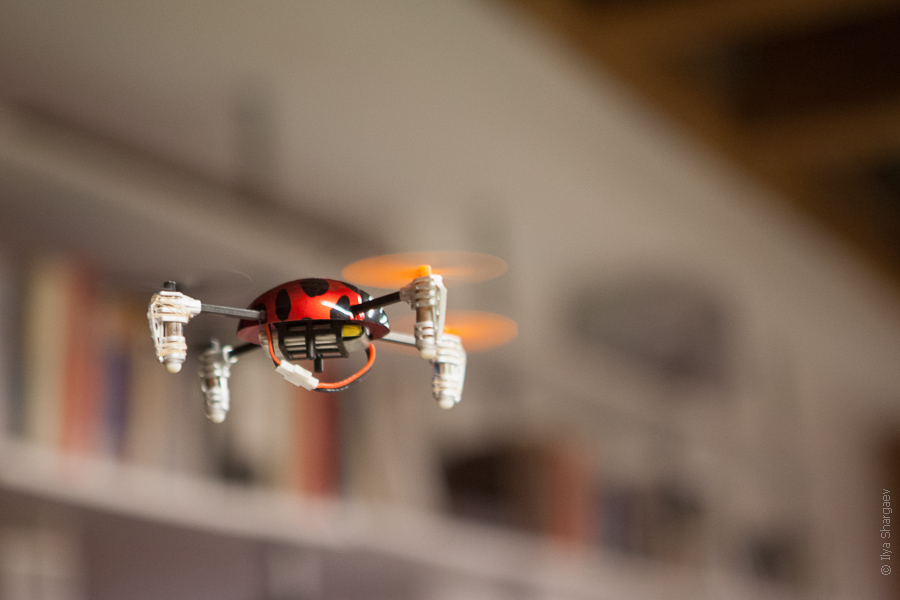
The flight time from one battery is 5-8 minutes. This may seem a little, but controlling a rotary-wing aircraft requires continuous concentration, so when you plant one or two batteries, you want to take a break. Charging one battery takes 1-1.5 hours, in the charging that comes with the kit, you can charge two batteries at the same time.
Conveniently, the battery does not end immediately, the craving just drops, the insect can no longer fly up and hang at the same level, and begins to gradually decrease.
The range of the remote control can be said to be excessive. Say, at a distance of 50 meters, the bug can no longer be seen, and the remote control finishes off in a straight line much further.
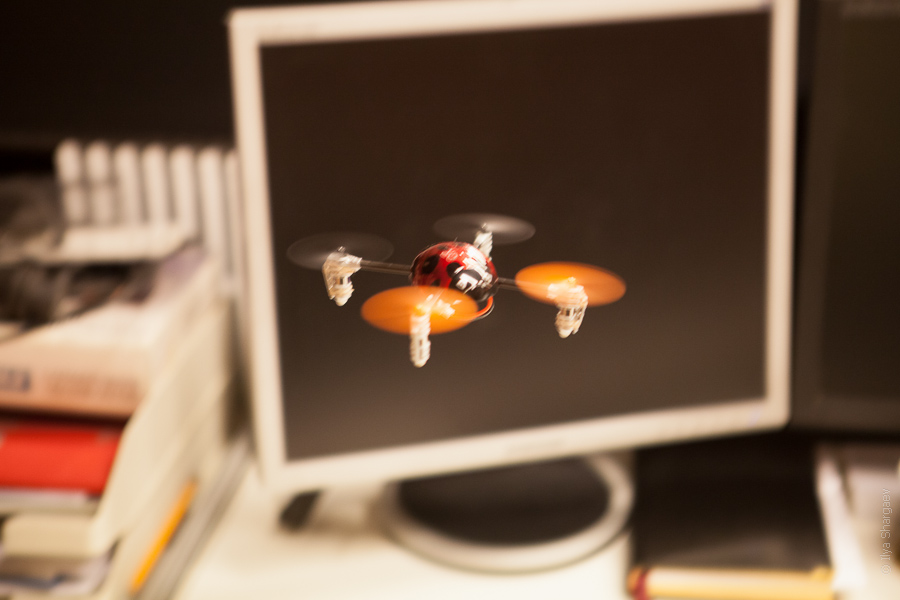
The difference between a bug and "toys" such as AR.Drone is that the aircraft is controlled by a mechanical remote control, which allows more precise control of the flight, and even perform 3D aerobatics. In addition, the AR.Drone is hung with sensors (for example, if it flies over a stool, it rises higher, since it is stabilized in height by measuring the distance to the surface below it), and the bug does not have sensors other than a gyroscope. In addition, the bug has a “3D mode” with disabled stabilization. If it is almost impossible to flip a bug in the air when stabilization is on, then by turning off stabilization, you can turn the coups.
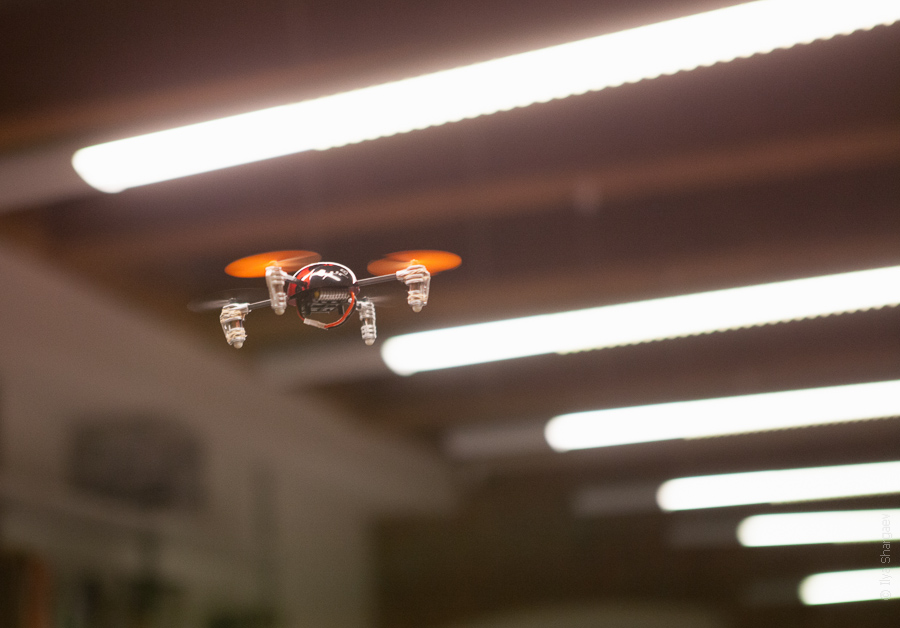
Separately, it is worth talking about the version with a camera and a TX 5805 video transmitter on the belly.
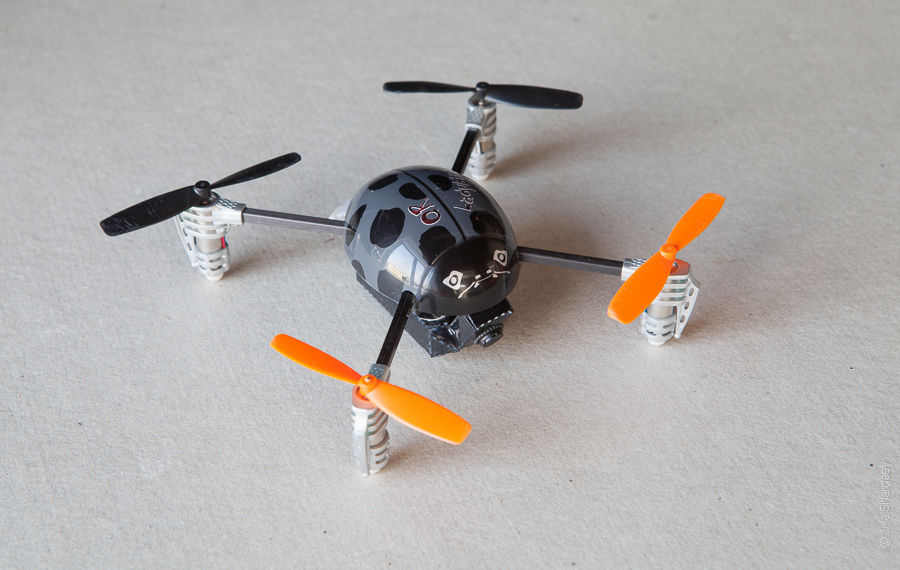
In addition to the transmitter glued to the body of the insect, the kit includes a Devo F4 or F7 remote control - a video signal receiver is built into this remote control, what the “insect” sees on the remote screen. Such a kit already costs about $ 250-300. On the one hand, it is relatively expensive, and having studied FPV systems on a specialized forum, you can assemble a similar system cheaper, or assemble a system of higher quality for comparable money (say, already with video glasses), more powerful and more universal. But, on the other hand - there is already a ready-made kit, took it out of the box and practice.
The disadvantage of the TX 5805 camera is that it has a lens with a relatively narrow viewing angle, I personally would like an angle wider and a half times. Now I'm trying to choose another lens for it (there is a lens with an external thread diameter of 7 mm). The remote control has a video output, you can connect it to a portable TV, and fly on a large screen, or to a video capture card, and write video to a laptop.
The range of the pair of video transmitter-video receiver is small, it is enough to fly into one wall and there are interference, or even the connection may be interrupted. In the open air, I have not tested the range yet - the weather has not really pampered us yet.
For completeness, I recorded a video of a flight through the camera. I still control the FPV flight quite uncertainly, I haven’t even flown on the camera for even one hour, and then I need good practice. Therefore, give a discount on small experience, I hope the video can make an idea of flying "in the first person."
Black stripes that go through brightly lit areas are a drawback of a video capture card; there is nothing like that on the remote control screen. In the middle of recording for half a second the signal disappears - it happens when you fly into a wall or some large object. In the end, there was an unexpected, but rather successful landing backwards on a bookshelf :)
I like to systematize and catalog, therefore, as I read the forums, I myself have accumulated useful data, links, and advice on a bug. Having looked at all this material, I realized that on the basis of it you can make an article or FAQ. I wrote a relatively detailed review on my blog . It may be useful to study it if you are interested in a bug, and want to learn more about its characteristics, versions, consoles, compatibility, spare parts.
About my “park” and flight experience.
I have three sets and a full supply of all spare parts, a bunch of batteries and a suitcase for transportation.

The first bug was with the Devo 7 remote control (in the photo he is in a suitcase). I try to fly regularly - every weekday I plant one or two batteries. For a month, the insect survived dozens of falls and two accidents - once unsuccessfully, hard falling to the floor from a height of about 2 meters, I broke the frame and something was damaged in the "brains", the engines began to pull in different ways. I had two spare frames, the board had to be ordered, but the board in an online store convenient to me was not available and I ordered a whole new kit with the Devo 4 remote control. Another unsuccessful drop was from a height of about 5 meters to the floor, again the frame has broken. Then I decided to order an FPV kit with a Devo F7 remote and a spare board. Ironically, the FPV kit arrived from China earlier, as a result, I did not even include the last kit with Devo 4 - it’s in the box.
